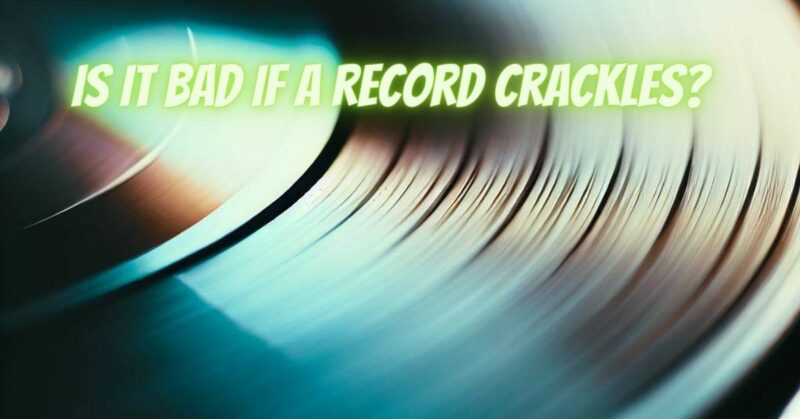The warm, analog sound of vinyl records is cherished by audiophiles and music enthusiasts alike. However, even the most well-preserved vinyl can sometimes produce crackling and popping sounds during playback. In this article, we will explore whether crackling during vinyl record playback is a cause for concern and what factors contribute to this phenomenon.
Understanding Crackling and Popping Sounds
Crackling and popping sounds, often referred to as surface noise, are a common occurrence when playing vinyl records. These sounds are caused by several factors:
- Dust and Debris: Minute dust particles, lint, and debris that accumulate on the record’s surface can create noise as the stylus traverses the grooves.
- Wear and Tear: Over time, records can develop wear, including surface scratches and scuffs. These imperfections can cause audible crackles during playback.
- Static Electricity: Static electricity can build up on both the record’s surface and the stylus, leading to intermittent popping sounds.
- Imperfections in the Grooves: During the vinyl pressing process, minor imperfections can occur in the grooves, resulting in occasional noise during playback.
- Storage Conditions: Improper storage conditions, such as exposure to high humidity, can cause mold or mildew growth on the record’s surface, contributing to surface noise.
Is Crackling During Playback a Concern?
Crackling and popping sounds during vinyl playback are generally not a cause for concern. Here’s why:
- Inherent to the Format: Vinyl records, by their nature, are prone to some degree of surface noise. Many collectors and audiophiles appreciate these imperfections as part of the analog charm of vinyl.
- Record Age: Older records are more likely to exhibit surface noise due to wear and tear. Regular cleaning and maintenance can help reduce noise on vintage vinyl.
- Proper Care: Records that have been well-maintained and stored in optimal conditions are less likely to produce excessive crackling.
- High-Quality Equipment: A quality turntable, stylus, and phono preamp can help minimize surface noise during playback.
Minimizing Surface Noise
If excessive crackling and popping sounds are detracting from your vinyl listening experience, consider the following steps to minimize surface noise:
- Cleaning: Regularly clean your records using a carbon fiber brush, anti-static brush, or a record cleaning machine to remove dust and debris.
- Stylus Maintenance: Keep your stylus clean and in good condition. Clean it using a stylus brush and ensure proper tracking force.
- Proper Storage: Store your records vertically in a controlled environment with stable temperature and humidity levels.
- High-Quality Equipment: Invest in a high-quality turntable, cartridge, and phono preamp to ensure accurate playback.
- Replace Worn Records: If a record is severely scratched or worn, consider replacing it to enjoy a cleaner listening experience.
Crackling and popping sounds are an inherent part of vinyl playback and are typically not a cause for concern. While they may be more pronounced on older or improperly maintained records, surface noise can often be managed and minimized through proper cleaning and playback equipment. Many vinyl enthusiasts appreciate these imperfections as part of the analog experience, adding to the unique charm of vinyl records.


